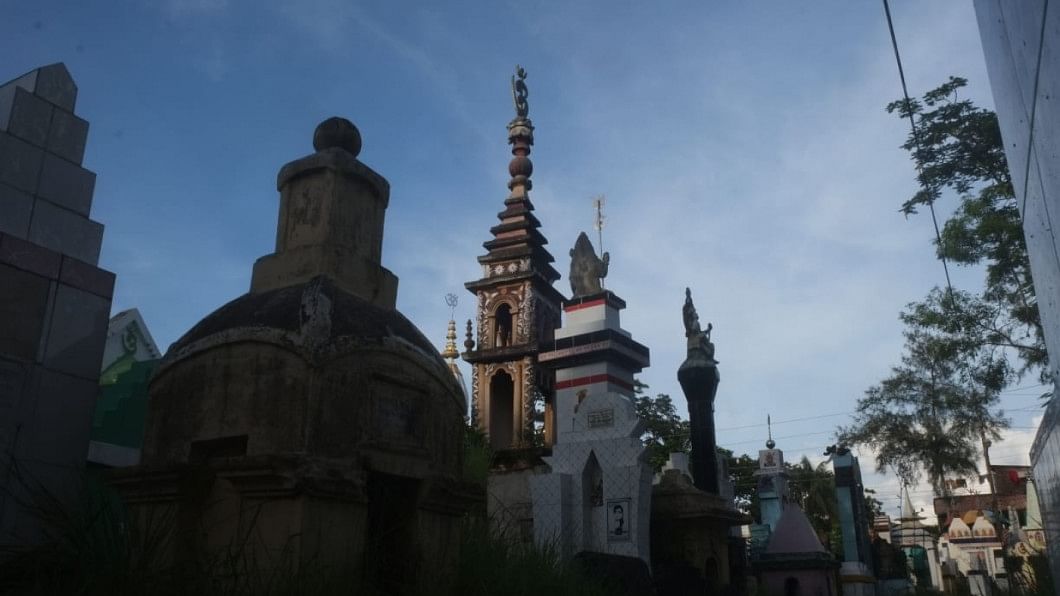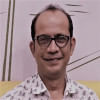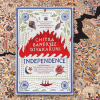Partition 1947: The flow between two sides of a line

Seventy-six years after the Partition of the Indian subcontinent, we are still a long way from understanding the complex ways in which this event affected the everyday lives of people and communities then, and how it still continues to shape our collective consciousness, politics and ways of being. This series, featuring scholars of partition studies from across the subcontinent is an attempt at exploring the complexities and contradictions of the momentous event that forever changed the contours of this region. This article, the first in the series, delves into the reality of the communities that are yet to recover from the trauma of Partition.
In the mufassil town of Barishal (now a metropolitan city), shmasan dipali (festival of offering candles and lamps on various memorial structures at the cremation ground) made me aware of the numerous nameless as well as forgotten people of the area. This is probably the only such religious gathering at cremation grounds in the entire South Asia. As a child, I sensed many dark and left-out memorials just beside the ones where someone lit lamps or candles with offerings of food that were favourites of the departed souls. While I lit candles on the mud-built and renewed memorial of my grandfather (as we could not afford a brick-built one), my father always told me to offer a candle on those dark, brick-built memorial structures that were constructed in the shape of Hindu temples. Some of them had epitaphs, which had eroded over time and were unreadable. The rest of them had the names and identities of the departed inscribed – those were also lost. Not a single kin was left in this world to offer light as a prayer for the otherworldly well-being of these departed ones. Where had they gone with no one to remember? – I wondered.

Later, I learnt that many of the kin of these departed souls had to leave the place, because of the recreation (and imposition), redrawing and refashioning of this land by some lines, which one may not always sense on the real ground; though often, these lines are felt: they are effective and embodied. Dip or lamps for these people, both the departed ones and their descendants, will never be lit on this side of the line. This side will remain dark. This side will be remembered as well as forgotten. Remembrance always coincides with oblivion.
After a long time, during adulthood, I came to understand the meaning of missing kin and nameless people. I visited different areas on the other side of the line, in West Bengal, India, for an archaeological survey. Walking across the localities of Malda, South Dinajpur, Bahrampur, I came across several abandoned graveyards, or graves of unknown or forgotten people. I could connect my awareness of loss and namelessness in Barishal with a similar feeling on the other side of the line. I have seen buildings belonging to someone from oblivion, only remembered by a few elders, now occupied by someone else. I have seen abandoned matha (commemorative temples) and dilapidated temples constructed, used and abandoned by nameless or forgotten people in both northwestern and southwestern parts of Bangladesh. Sometimes, they are remembered in local oral narratives where the supernatural and the real mingle with each other. Many of such structural remains are narrated as the remnants of some people who exchanged or bought land and properties on the other side of the line after the partition.

The creation of the line was entangled with violence, loss, uncertainty, and misery, as well as hope, new-found faith, dreams and freedom for many. Perhaps the feelings of loss and hope are often enmeshed into each other. Perhaps the nostalgic longing for the lost land is nourished by the hatred and distaste for the places someone was forced to leave. I have encountered many friends in West Bengal who still carry the romantic and nostalgic idea of the homeland on this side, even though they were born on that side of the line. Together with the feeling of longing to come to the homeland, they are burdened with a strange hatred and fear remembering the violence, force, and loss. One side of the line blames the other side, even when they relate, crave, and connect with each other. Simple, causal explanations in fashionable discourses of identity politics can never attend to this simultaneity of love and hate.
***
I met Md Moazzem Hossain (not real name) at Kaharol in Dinajpur when we went for archaeological surveying to find the places where some Brahmanical icons had been found earlier. He was one of the few people in the village with the knowledge of the archaeological place, which is now completely lost. He was referred to by others belonging to the same religious community as a refugee. Invocation of the refugee identity is not isolated to Kaharol – many neighbourhoods in Birampur, Fulbari, Bochaganj, Birol, and other bordering upazilas of Dinajpur district are termed hathat para (a habitation constructed suddenly) by the locals, and many inhabitants who are Bangladeshi citizens are called refugees. Some of these people were born in post-partition East Pakistan, and some of them were born in independent Bangladesh. Despite these temporal and cartographic changes, and the simultaneous transformation of identity of the places, they carry the burden of the identity of an outsider. The change of these place's names could not erase their past. Many of them or their ancestors faced violence on the other side and came to this side of the newly created Pakistan with a hope of freedom and dignity, which they were deprived of in British India. As Muslims, many of them experience constant ridicule, name-calling, and exclusion.
Even when the space – land, water, sky – is separated through a drawn line, both real and imaginary, the subjective effect of that turns them into places created by feelings, narratives, and embodiment. Construction of these lines create divides in body and mind. These lines, popularly known as borders, produce "us" and "them." We are different from them. Interestingly, we also share similar gastronomical habits, cultivation process, and feelings for rainfall. When ultra-nationalists claim the difference of mundane and subsistence habits between two religious communities, they consequently divide the heterogenous everyday living of the religious community they claim to represent. Acts and narratives of homogeneity produce more heterogeneity, after all, across the borders, both actual and fictitious.
***
We have been taught about the country – or the state, or the nation – since our childhood through maps. Millions of people lost their lives for these boundaries to be drawn, one after another. We internalise these lines, represented by the conventions of depicting boundaries, consisting of various combinations of dashes and dots. These are spaces that are objectified, mappable and representative. On objectified and value-neutral pieces of papers or their images, these boundary markers are fixed, real and observable. We learn to imagine them as if the spaces on both sides of a line are undisputed and can be sensed like the material world. This idea of the boundary between two nation-states was first fractured when I was asked by some people in Hakimpur of Dinajpur in the early 2000s to see the border. We went for archaeological surveying with our first-year students.
My idea of the border was completely shattered. They showed me a household, the kitchen of which is in Bangladesh and the bedrooms are in India. We walked through a narrow space of two feet, and they pointed to the left as India and to the right as Bangladesh. Local people told me that people from the other side – "theirs" – often came to offer namaz on this side – "ours." "We go to the other side to watch films at cinema halls," they said. I was perplexed by this normalised notion of a line or border, as I was not seeing that line on the actual land.
The notion of the line got more complicated when we were surveying on the dry bed of Chhoto Jamuna River, which gets water flow only during the monsoon months these days. One bank is on the other side, and when the bank just takes a meandering bent, the same bank becomes Bangladesh. The monsoon water breaks these complications. The water flowing from the upstream travels through both Bangladesh and India like a universal citizen. Unless the nation-state constructs a dam, the flow in the channel cannot be controlled. During a flood, the water draining the basin does not need any passport or visa to cross the boundary. It is impossible for the water to identify it as "us" or as "them." The dam can create the boundary, and their dam can control the river flow, flood, and drought in the space inhabited and cultivated by us. During the peak of monsoon, when water from the rainfall in the Himalayan piedmont zone belonging to "them" creates havoc and devastates their homes, crops, and lives, it does the same in our part in the downstream area of the basin. The difference between human subjects and non-human subjects becomes evident. The lines are crossed without any surveillance, killings by the border security forces, and controls of the dams.
***
I felt the terror of the border during one survey close to the border in Birol upazila. Two archaeological sites were very close to the line, which is marked by fences of barbed wire, a broad metal road patrolled by the border forces. We were using dumpy levels placed on a tripod. The killing of Bangladeshi citizens by the Indian Border Security Force (BSF) was so terrifying for us that we tried hard to hide behind trees and bushes. The fear might be unreal. The killing of people has always been real.
In many places, it is impossible for people, especially cultivators and the cattle, to pay respect to the lines and their modern legal implications. We almost crossed the lines marked by cement pillars concealed behind green paddy fields. Imagine a situation where you are in the middle of a lush green paddy field without any idea about the line. That is unreal. Look, look! That side of the paddy belongs to India and this side belongs to us! Where are they and where are we – I still try to locate them in my memories.
These lines separate. That is real and this reality has many different experiences and memories of domination and subordination. We cannot deny that these lines also connect. The difference is always comparative and connective. Even when people are imprisoned by constructing walls and barbed wire fences, they find a way to connect with the people from the other side. People who have been produced as an eternally existing "them." Hindus as the other of Muslims. Muslims as the other of Hindus.
Historically, there have always been many lines, boundaries, and differences. There were spaces segregated by imposing boundaries, and those boundaries were redrawn time and again. The boundaries between the eternal "us" and "them" were never real; they have been manufactured, refashioned, and recirculated in different ways and means.
***
A dry riverbed with its meandering banks can be narrated and experienced as "us" or as "them." The same space with flow and overflowing banks overturns that experience. The partition is real and unreal at the same time. Ironically, the line is oblivious, connective, and flowing. Binaries and differences have their actual effects both through the experiences of hatred and love, through violence and tolerance, even when we know that the binaries are historically constructed and unreal. Binaries, at the same time, are relational. One category of the binary will be non-existent and invalidated in the absence of the other. It's the connection of two dots that always draws a line, after all. If someone intends to erase a line, they must erase the dots. There is no alternative.
Let me end with some words from one of my favourite songs, Us and Them, by Pink Floyd:
And after all we're only ordinary men
Me
And you
God only knows
It's not what we would choose to do
Forward he cried from the rear
And the front rank died
And the general sat
And the lines on the map
Moved from side to side
Black and blue
And who knows which is which and who is who
Up and down
And in the end it's only round 'n round
Haven't you heard it's a battle of words
The poster bearer cried
"Listen son," said the man with the gun
There's room for you inside.
Dr Swadhin Sen is a professor of archaeology at Jahangirnagar University in Bangladesh.

 For all latest news, follow The Daily Star's Google News channel.
For all latest news, follow The Daily Star's Google News channel. 












Comments